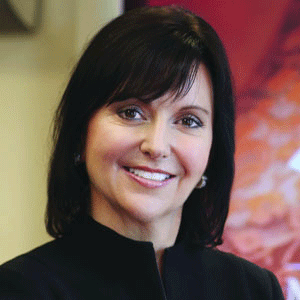THANK YOU FOR SUBSCRIBING

Balancing Innovation with Stability in the Quick Service Restaurant Sector
Anthony Sok, General Manager Information Technology, Sushi Sushi


Anthony Sok, General Manager Information Technology, Sushi Sushi
Anthony Sok is an experienced Executive Leader and IT Professional with over 13 years of cross-industry expertise spanning Retail, Education, Corporate, and Quick Service Restaurant (QSR) sectors. He currently serves as General Manager of IT, with a strong track record in driving digital transformation, enhancing customer experience (CX), and leveraging AI to deliver measurable business outcomes.
In an exclusive interview with APAC CIOoutlook, he shared his invaluable insights regarding the future of the industry, along with the challenges and possible solutions.
1. Can you walk us briefly through your leadership role as General Manager Information Technology? What are your key responsibilities and areas of focus?As the General Manager of IT at Sushi Sushi, I have the privilege of overseeing the entire technology landscape while leading critical initiatives across digital transformation, customer and employee experience, digital engagement, and cybersecurity. This is a senior executive leadership role within a fast-growing organization that places strong emphasis on agility, rapid innovation, and scalable technology adoption. The pace of change is fast, and our IT function plays a central role in enabling and supporting this transformation.
My team is responsible for both Business-as-Usual (BAU) operations and the management of tactical and operational incidents and service requests. We provide comprehensive IT support to a network of 180 stores across Australia, encompassing both company-owned and franchised locations.
Our current strategic priorities reflect our commitment to innovation and resilience. First, we are enhancing the customer ordering experience by delivering a seamless and scalable omnichannel platform that includes our mobile app, delivery services, corporate ordering, and loyalty programs—creating an "endless aisle" for customers. Second, we are focused on strengthening cybersecurity and resilience by fostering a cyberresilient culture, improving our people, processes, and systems to elevate overall cyber maturity. Lastly, we are innovating customer and digital experiences by challenging traditional norms within the Quick Service Restaurant (QSR) sector. By leveraging emerging technologies and AI, we aim to drive innovation, improve operational efficiency, and create memorable customer interactions
2. What are some of the biggest challenges you’ve faced in aligning IT with broader business objectives, and how have you overcome them?One of the biggest challenges in my role is finding the right balance between driving innovation and understanding how much change the business and our people can realistically absorb. We are in a high-growth phase, which brings a great deal of excitement but also places added pressure on teams already managing their day-to-day responsibilities.
Being a franchise-led business adds another layer of complexity. We have over 90 franchise partners, ranging from single-store owners to those operating multiple locations, so change cannot be approached with a one-size-fits-all mindset. That’s why we lead with our core values, especially Respect and Collaboration. We remain mindful of how any digital transformation impacts each individual partner
To maintain momentum without overwhelming the network, I focus on leading with clear communication and building trust.
Franchise empowerment is indeed at the core of our technology strategy at Sushi Sushi. Our purpose is clear — to enable our franchise partners through smart, simple, and scalable technology that adds value without adding complexity. The key is to keep our approach straightforward and outcomes-focused. Every solution or strategy we implement must answer three critical questions for our partners: What is the ‘why’? Is this technology delivering a clear return on investment, whether through financial gain, time savings, or operational efficiency? Does it enhance the customer and brand experience? Our franchisees need to feel confident that the technology we introduce will help attract and retain customers. And finally, does it reduce friction? By streamlining processes and reducing the time spent on IT support or operational workarounds, we free up franchisees to focus on what matters most: serving customers and driving sales
Transformation should never come at the cost of stability, but stability should not hold back innovation either
At Sushi Sushi, we follow a simple formula — change should never burden our franchise network; it must empower them. Whether it is automating repetitive tasks or improving system stability, our goal is to give franchise partners more time and headspace to grow their business. We also prioritize transparency and engagement, openly sharing our technology vision and bringing franchisees along the journey. It is important they understand not just what we are doing, but why we are doing it. By clearly showing the tangible benefits and our progress toward becoming a technology-led organization, we build trust and momentum together.
4. You’ve spoken about avoiding the trap of “checkbox” security and focusing instead on foundational readiness. What are some of the key lessons or best practices you’ve learned from this approach?It is common to see businesses rush into cybersecurity by deploying top-tier tools such as MDRs, SIEMs, or SOC services without first addressing the most critical layer: their people. Having worked in retail for years, I have learned that in a real crisis, tools alone do not save you; people do. If staff have not been trained, rehearsed, or walked through a ‘fire drill’ like a tabletop exercise, even the best technology falls short.
At Sushi Sushi, we are focused on building cyber resilience from the ground up. We began with Security Awareness Training for our Support Office and are now extending that to our franchise network. In partnership with our cybersecurity provider, Gridware, we are aiming to set a new standard for cyber maturity in the QSR space.
Our approach follows a Crawl, Walk, Run model. In the Crawl phase, we focus on quick wins such as risk assessments, a business continuity plan, an incident response plan, and a disaster recovery plan. The Walk phase involves aligning to ISO 27001 and the ASD Essential Eight (ML1). In the Run phase, we are moving toward 24/7 international coverage and the launch of our full-spectrum strategy, Cyber 360. Empowering our people, not just deploying technology, is how we create lasting protection.
5. What advice would you offer to fellow IT leaders in the retail and food service industries who are navigating transformation while trying to maintain day-to-day stability?My biggest advice to IT leaders in retail and food service is simple: never lose sight of the customer. Today’s customers are spoiled for choice and their expectations have never been higher. You can have the best systems and the most robust infrastructure, but if the customer experience falls short, none of it will matter.
Being based in Melbourne, I often say that we Melburnians take our coffee seriously — we’re only one bad coffee away from never returning to a café. If we are that particular about a $5 coffee, imagine the stakes when a customer spends $10 to $15 on a sushi order. The same principle applies. At Sushi Sushi, we understand that customer experience isn’t just a single touchpoint; it is the entire journey. That journey has to be seamless, fast, and reliable every single time.
The reality is that if you’re not embedding a customer-first mindset into every technology decision — whether it’s digital ordering, loyalty programs, support, or in-store systems — you’re already falling behind. Transformation should never come at the cost of stability, but stability should not hold back innovation either. It’s a delicate balance, and the only way to achieve it is by relentlessly prioritising the customer experience. Because in quick service restaurants and retail, that is where it all begins and ends
Weekly Brief
I agree We use cookies on this website to enhance your user experience. By clicking any link on this page you are giving your consent for us to set cookies. More info
Read Also













